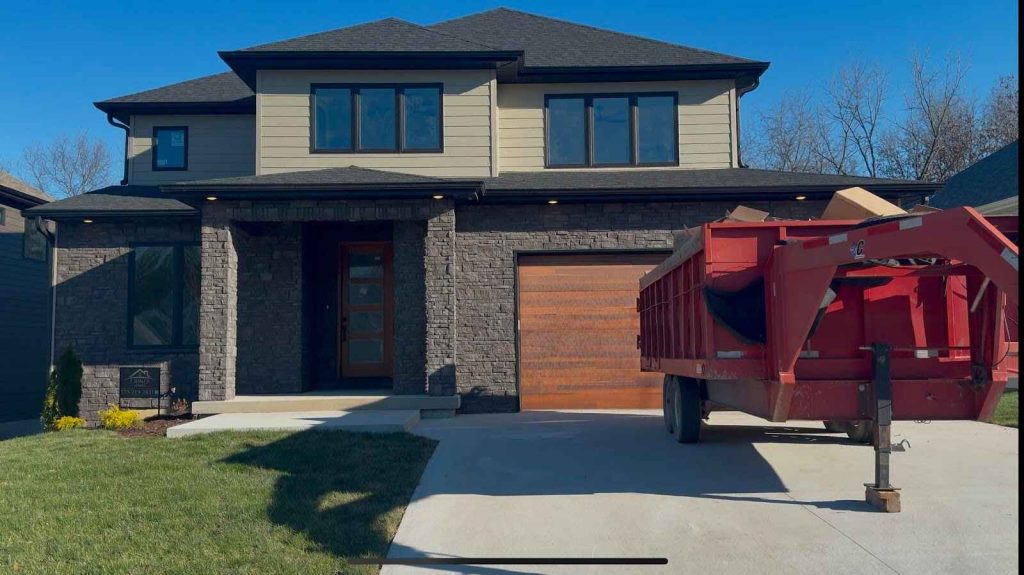Building your dream home is a thrilling milestone. It’s your chance to personalize every detail and create a space designed just for you. But for first-time custom home builders, this exciting venture can also feel overwhelming, like navigating a maze filled with potential pitfalls. Many first-time homeowners make the mistake of not hiring experienced custom home builders near Columbia, MO who understand the local market and construction standards.
Without proper planning and guidance, it’s easy to stumble into mistakes that can lead to budget overruns, timeline delays, and unnecessary stress. That’s why we’ve put together a guide to the most common errors first-time home builders make—and, more importantly, how to avoid them. With these tips, you’ll be far better equipped to create a home-building experience that’s smooth, efficient, and (most of all) enjoyable.
1. Skipping a Detailed Budget and Financial Plan
The Problem
One of the most common mistakes for first-time builders is failing to create a detailed and realistic budget. It’s easy to underestimate costs or overlook hidden expenses like permits, landscaping, and utility hookups. When this happens, costs can spiral out of control, leaving you scrambling to cover the difference.
Why It Matters
A proper budget not only helps you avoid financial surprises but also ensures you’re spending money strategically. Unaccounted expenses or vague estimates can delay your project or result in sacrificing features you wanted.
How to Avoid It
- Work with a financial consultant or contractor to get accurate estimates for every part of the process, from materials to labor to utilities.
- Prioritize your must-haves (like that chef’s kitchen) while keeping some flexibility for unexpected expenses by adding a 10-20% contingency buffer.
- Use a budgeting app or software to track your spending across categories like framing, plumbing, and finishes. Regularly review your finances with your team.
2. Neglecting to Choose the Right Location
The Problem
Falling in love with a plot of land without evaluating the logistics is a rookie mistake. Whether it’s proximity to amenities, potential flooding, or zoning restrictions, choosing the wrong location can lead to issues that are hard—or impossible—to fix later.
Why It Matters
Your home’s location will affect your lifestyle and property value for years to come. Factors like commute times, school district rankings, drainage, and soil stability can all impact your home’s usability and safety.
How to Avoid It
- Research thoroughly before purchasing land. Consider both daily conveniences (commute, grocery stores) and long-term prospects (future developments, property value trends).
- Visit the site multiple times at different times of day to examine noise levels, traffic, and neighbor activity.
- Hire a land surveyor to assess the lot for drainage, soil quality, potential utility installations, and other site-specific challenges.

3. Overlooking the Importance of Quality Materials
The Problem
Many first-time home builders attempt to cut costs by selecting cheaper materials. However, lower-priced materials often compromise on quality, leading to higher maintenance costs, safety concerns, and quicker deterioration over time.
Why It Matters
Quality materials directly impact the longevity, sustainability, and overall comfort of your home. Durable, energy-efficient materials not only add value but also save money in the long run by requiring less frequent replacement, repairs, or upgrades.
How to Avoid It
- Prioritize high-quality, durable materials for vital components like insulation, roofing, and windows.
- Research material warranties to ensure you’re getting long-term value. Many reputable manufacturers offer guarantees on their products.
- Talk to your contractor about sustainable, energy-efficient options that may cost more upfront but reduce utility bills over time (think solar panels or energy-smart HVAC systems).
4. Failing to Work with Experienced Professionals
The Problem
DIY enthusiasm can be tempting—whether trying to act as your own contractor or hiring less experienced (but cheaper) professionals. However, poor project management or lack of construction expertise frequently results in delays, rework, and safety risks.
Why It Matters
A project as complex as a custom home building requires coordination among architects, designers, contractors, and sometimes subcontractors like electricians or plumbers. Without experienced professionals guiding the process, crucial details could be overlooked or executed incorrectly.
How to Avoid It
- Hire licensed and insured professionals with proven track records in custom home building. Ask for referrals or customer reviews.
- Confirm your team is familiar with local codes, permits, and environmental regulations.
- Maintain consistent communication with your builder and architect. Schedule regular check-ins to discuss timelines, costs, and progress milestones.
5. Not Planning for the Future
The Problem
It’s easy to only plan for your current lifestyle when building a custom home. But skipping future-proofing considerations—such as family needs, aging in place, or resale prospects—can limit how functional or valuable your home becomes over time.
Why It Matters
A custom home is a long-term investment, so it must adapt to your changing needs. Whether it’s making space for a growing family, ensuring accessibility for aging in place, or appealing to future buyers, proper planning ensures your home remains useful and valuable.
How to Avoid It
- Consider flexible layouts. For example, build multipurpose rooms that can function as nurseries, guest rooms, or offices.
- Incorporate features like wide doorways, no-step entrances, or ground-floor bathrooms for accessibility.
- Plan for sustainable systems (rainwater collection or renewable energy, for example) to save on utility costs and increase your home’s efficiency.
- Even if you don’t intend to sell anytime soon, choose timeless design elements and neutral palettes to appeal to future buyers.

Start Building Your Dream Home Today
Building a custom home is a significant undertaking, but with thoughtful planning and informed decisions, it can be a rewarding and enjoyable process. Avoiding mistakes like underestimating your budget, settling for suboptimal locations, or sacrificing on materials will save countless headaches—and dollars—down the road.
Remember, partnering with expert professionals and planning for both the present and future ensures you get the dream home you’ve always imagined. By following these tips, you’ll be better prepared to manage the process, stay on track, and ultimately design a space that fits your lifestyle perfectly.
Whether you’re just starting to plan or already breaking ground, preparation and knowledge are your best tools—use them to build a house you’ll cherish for decades to come.

